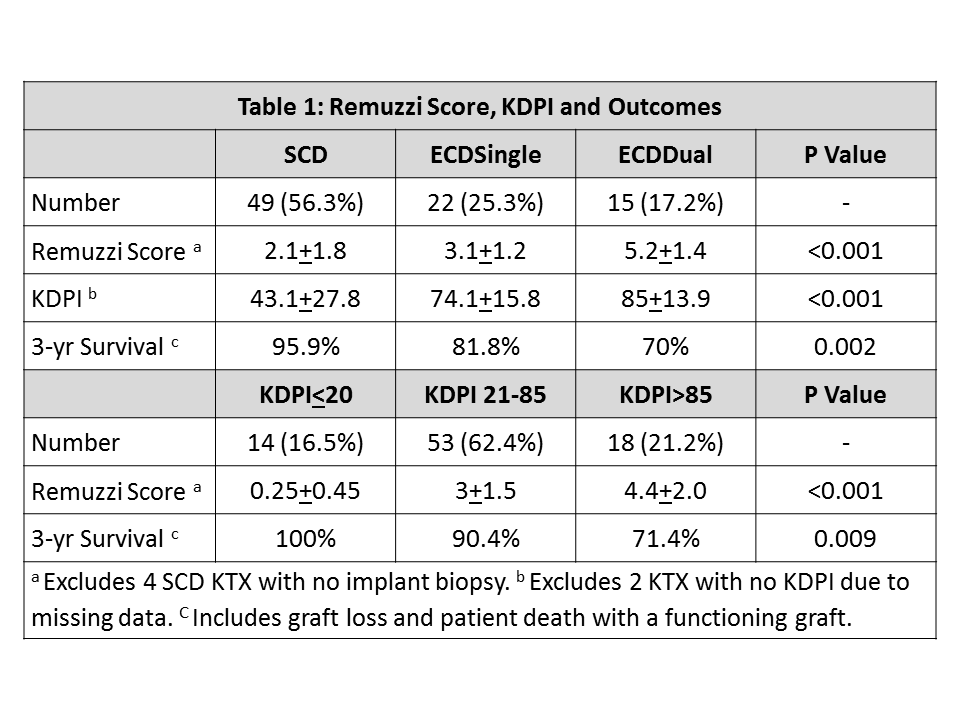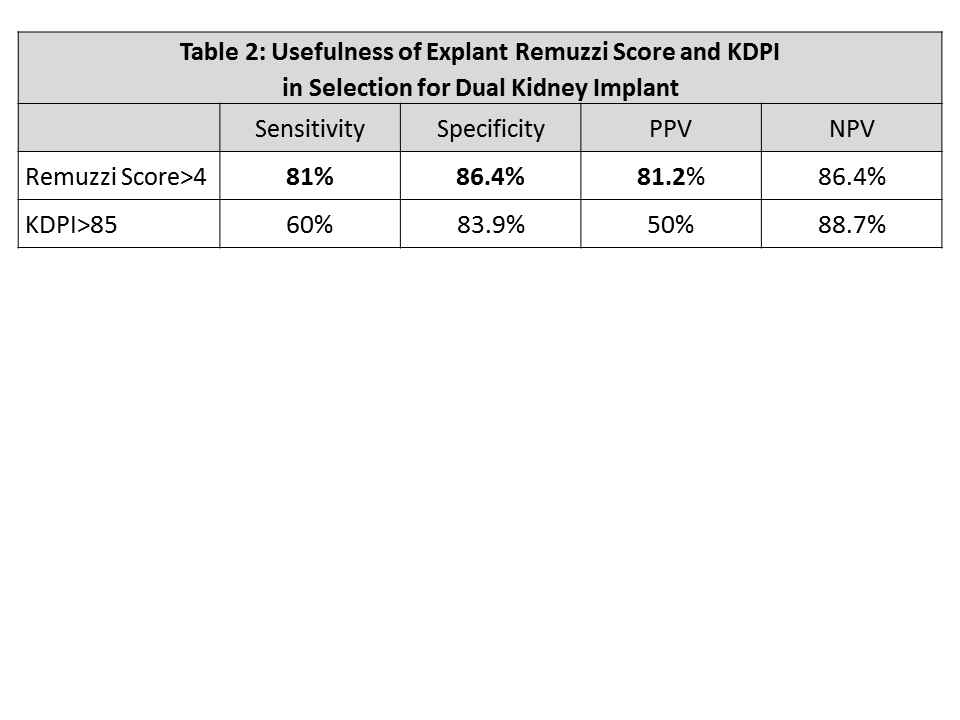Explant Biopsy and Remuzzi Scoring Outperforms Kidney Donor Profile Index (KDPI) in Selection of Extended Criteria Donor Kidneys for Single Implant
Anantharaman Vathsala1, Hersharan Sran1, Ho-Yee Tiong1, Angeline Goh1, Rachel Teo1, Ming Teh2, Thomas Thamboo2.
1National University Centre for Organ Transplantation, National University Hospital, Singapore , Singapore; 2Pathology, National University Hospital , Singapore, Singapore
Introduction: Given the high incidence of End Stage Renal failure (ESRF), Extended Criteria Donors (ECD) are crucial to increase deceased donation (DD) rates. However, allocation of ECD kidneys to waitlisted ESRF patients is challenging due to difficulty in predicting donor quality and post-transplant outcomes.
Methods: Since November 2009, kidney DDs were stratified as ECD if Age>60 or if meeting UNOS criteria or if Diabetic or with other renal conditions; the rest were Standard Criteria Donors (SCD). ECD underwent explant biopsy, rapid biopsy processing and histological scoring of Glomeruli, Tubules, Interstitium and Arteries to derive a total Remuzzi Score (Remuzzi). Generally, kidneys with Remuzzi of 0-4 or 5-7 were nationally allocated as single (ECDSingle) or dual Implants (ECDDual) respectively. This single centre retrospective analysis evaluated utility of the Kidney Donor Profile Index (KDPI), as applied to a multiethnic Asian DD population, (mean age:47+17 yrs, 84% Chinese, 49.3% Male) for identifying ECD for single vs dual implant.
Results: Of 87 kidney transplant (KTX, mean age: 47.8+10.4 years, 69% Chinese, 42.5% Male), 56.3% were ECD (Table 1). Age, sex, ethnicity, incidence of Delayed Graft Function and Biopsy Proven Acute Rejection by 6 months were comparable between groups. Expectedly, Remuzzi and KDPI were higher and outcomes worse for ECD, especially ECDDual KTX. Likewise, Remuzzi was higher and outcomes worse for higher KDPI. 
Whereas KDPI<20 were invariably allocated as SCD, 50% with KDPI>85 and 11.3% with KDPI 21-85 respectively were allocated as ECDDual, suggesting that KDPI is an insufficient discriminator for identifying ECD whose kidneys could be implanted as single implant with excellent outcomes. In contrast, explant Remuzzi>4 demonstrated higher sensitivity, specificity and positive predictive value (PPV) than KDPI>85 for selecting ECD for dual implant, permitting the remainder to be transplanted as single implants (Table 2).
Conclusions: Explant biopsy evaluation with Remuzzi is advocated for DD with high KDPI to identify ECD for single vs dual implant. Selecting those who will have excellent outcomes with a single implant despite adverse KDPI, permits optimal allocation of a scarce resource .
.
National Organ Transplant Unit, Ministry of Health, Singapore. Transplant Coordinators, National University Centre for Organ Transplantation.
